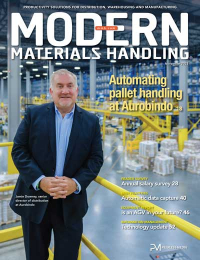Is an automatic guided vehicle (AGV) in your future?
Could well be true if you’re looking to reduce labor and improve workflow in inventory movement activities. But AGVs are not alone here as AMRs are pushing to make their mark.
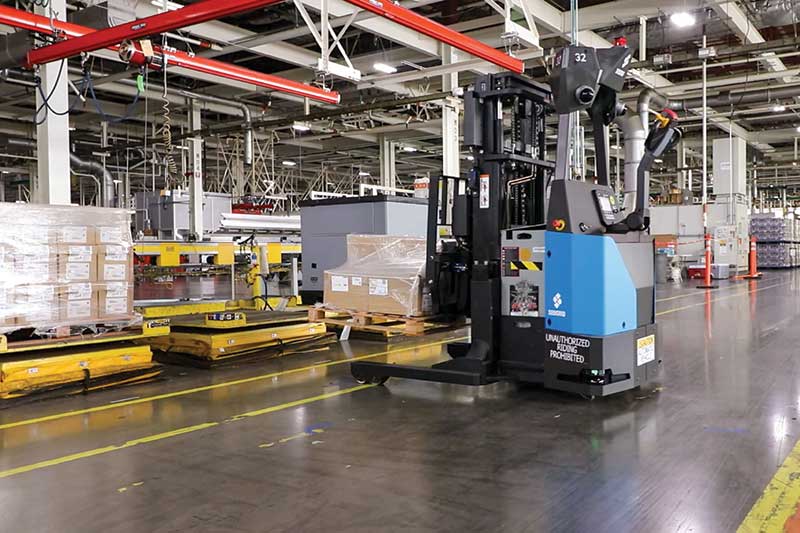
You might wonder: What’s up with automatic guided vehicles (AGVs) these days? And it would be a good question.
Some would say it’s all about automating labor out of inventory movement activities. Others would point to new options for optimizing workflow. And then, someone else would bring up the autonomous mobile robot (AMR). Really?
Yes, AGVs have been around for decades. But at the ProMat show earlier this year, you could hardly walk without tripping over an AMR.
No, they weren’t running around loose, but reportedly more than 100 AMR suppliers exhibited at the show. That’s a lot. AGV suppliers were probably a fraction of that number.
But what do so many AMRs have to do with the future of AGVs? Nothing. Everything. And both at the same time. This is a big stage, and it will include both AGVs and AMRs. Count on it.
That said, don’t bother to cue some dark, foreboding melodramatic music for AGVs. In fact, there’s a new supplier in North America as of September—Rocrich AGV Solutions.
As president Brian Spradlin explains, Rocrich is a joint venture of Jungheinrich and Mitsubishi Logisnext Americas.
“The two brands, which have each offered AGVs for some time, have formed Rocrich as the exclusive provider in North America of their mobile automation technologies,” Spradlin says. He adds that the companies have no intent to combine offerings beyond this North American venture.
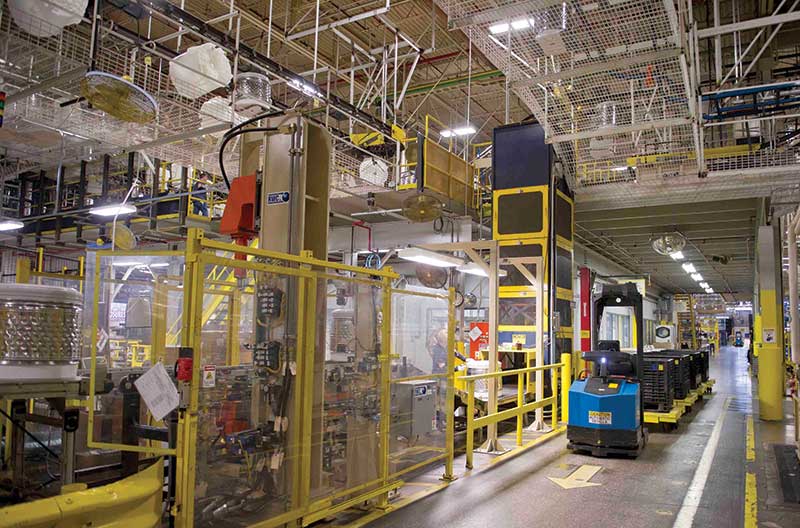
AGV offerings include tow tractors, stackers, pallet handlers and specialty vehicles as well as related software. Rocrich will offer AMRs in the near future.
So, despite the explosion of AMRs lately, AGVs aren’t going away. Here’s why.
The basics of AGVs
The story of what’s driving AGVs today is the same answer for what’s driving demand for all of materials handling automation: labor.
Or, more precisely, the lack of labor available. Eliminating the need for labor is not a new narrative for AGVs. For decades, they have been the automation solution for long-distance movement of inventory within the four walls.
That said, AMRs can do that, too.
A good pair to talk to about the AGV/AMR face off are from Dematic. As director of robotics, Kevin Heath is their AMR guy. Michael Perrot is focused on AGVs as director of mobile automation for North America.
Perrot explains that AGVs come in a range of form factors. One is tuggers that tow a train of loaded carts carrying pallets/cases/totes. But you also have, says Perrot, forked AGVs that store/retrieve pallets in racks as well as move and store rolls and inventory of other shapes such as sheets. Quite simply, the many different types of AGVs include high-reach, very narrow aisle, straddle, counterbalanced, tugger and custom vehicles.
The form factor for AMRs is a bit more limited, says Heath. AMRs, at least for now, are much more limited to low-to-the-floor vehicles (think Kiva at Amazon) that transport loads of many shapes and sizes.
Where the two technologies typically differ is how they get from point A to point B.
Traditionally, AGVs, says Perrot, use navigation systems that use wires, magnets or tape on the floor as well as fixed position objects such as bar codes or sensors on the floor or walls. The AGV follows a fixed path. Onboard intelligence is generally limited to checking that the AGV is doing what it was instructed to do.
Heath explains that an AMR follows its own, flexible path using light detection and ranging (LiDAR) to sense fixed and movable objects along the way. Some AMRs don’t just rely on LiDAR but also a related technology called SLAM (simultaneous localization and mapping) to get from point A to point B. Other AMRs follow a more fixed path of QR codes on the floor or even vision systems. In short, “AMRs create agility with results you can’t bolt down,” says Heath.

The importance of workflow
Welcome to the face off. And it’s happening from traditional manufacturing to e-commerce order fulfillment.
For instance, 50 of Seegrid’s vision-guided vehicles are at work in Whirlpool’s Clyde, Ohio, manufacturing facility. “The automated tow tractors navigate throughout the complex to deliver parts to locations on the assembly and sub-assembly lines, performing parts pickup, parts delivery and empty tote dropoff,” explains David Griffin, Seegrid chief sales officer.
Meanwhile, GreyOrange installed an AMR system with sortation and conveying capabilities at The Dafiti Group, a South American e-commerce clothing retailer. GreyOrange’s CEO Akash Gupta explains that the AMRs consolidate all previous process flows into a single field, reducing footprint, storage costs and handling. Gupta says the system increased sortation throughput by 65% and labor by 40%, resulting in a $3 million savings over five years.
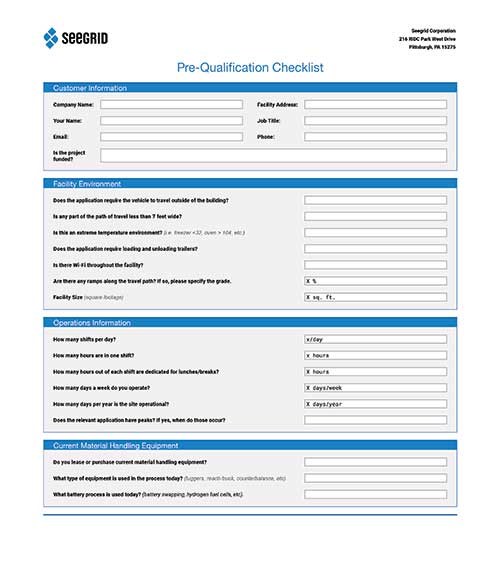
Beyond labor elimination, improved workflow is a major motivator for use of AGVs, explains Martin Buena-Franco, Raymond’s lead for product marketing of automation.
“Traditionally, AGVs have followed static routes within a contained space,” Buena-Franco explains. And to manage a fleet of AGVs, fleet management software provides oversight, coordinating movement and timing.
Going forward, there are actually two paths (pun intended) going forward for AGVs.
One is how AGVs make their own route decisions. The other is how software manages a fleet of AGVs from different manufacturers.
AGVs get more flexible
First, AGVs and their own route decisions.
And while none of that is going away altogether, it is changing. Quite simply, static routes are becoming decidedly less static. Just ask Mark Longacre, senior strategist for market development at JBT.
Vehicles from JBT use what’s called natural environment navigation, he explains. “They rely on a combination of sensors, cameras, LiDAR and advanced algorithms. They collect and process data to determine where that individual AGV is and where it will go next,” Longacre says.(Enter AMRs stage right.)
If that sounds a lot like how AMRs determine their own flexible path, it is. AGVs are now developing some of the same routing capabilities as AMRs. That gives AGVs the navigation ability to accommodate not just the facility’s fixed layout but to more easily accommodate movable objects that may warrant a different route than just a few seconds ago.
That puts AGVs in an entirely different light, says Perrot at Dematic. He explains that what was previously relatively inflexible now has the opportunity to become more flexible. It’s also the difference between fixed automation and being at least somewhat autonomous, adds Perrot. Both changes make AGVs stronger flexible automation players in a facility, adds Perrot.
Fleet management software
The second aspect here is fleet management. With 10 to 15 vehicles in an average AGV system, you need to coordinate their overall movement on the floor. The answer is a fleet management software platform, explains Perrot.
“It’s all about solving traffic management pinch points,” he says.
These platforms are well established, but some are getting an upgrade. Dematic, JBT, Raymond and Rocrich are four making some improvements here.
The standard platform manages only vehicles from a single manufacturer. The trend now is to manage vehicles from multiple brands. “This is developing as we speak,” says Perrot.
The upgrade is generally an API layer embedded in the software stack, and it requires minimal customization with the warehouse control system or warehouse equipment system integrated with the overall fleet management platform.
“Beyond improved vehicle coordination, the intent is to have maximum transparency as the layer controls different fleet brands,” says Perrot.
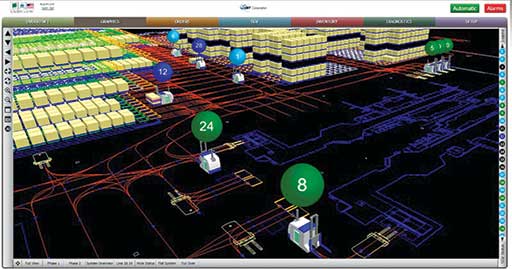
By the way, it is not uncommon for these platforms to manage AMRs that are part of the overall system, too, points out Dematic’s Heath. That brings us to collaborative AGV and AMR systems in facilities.
The two, says Heath, need to be able to cohabitate, often in the same aisle between rack. Such cross-traffic aisles require tight coordination or gridlock is sure to be a common occurrence, adds Heath.
Making equipment decisions
As was said earlier, AGVs and AMRs both have nothing and everything in common. It all depends on the application.
And your application should be the true starting point of your AGV selection process. Not the technology and with good reason. “You never want to automate a bad process. If you do, automation will just make it worse,” Longacre warns. “Automation is less forgiving than manual processes that offer a range of options to cover up flaws.”
Or, as Gupta of GreyOrange, says: “A careful evaluation system should not make it difficult to select the right technology. You are primarily looking for an overall solution, not a particular technology. Defining that solution is often complex but the core idea is to turn automation into an integral part of your ecosystem.”
Seegrid’s Griffin offers a pre-qualification checklist to get started (see graphic page 48). Griffin says start with a profile of the basic facility and operations as well as existing materials handling equipment and processes. There’s also a description of the payloads handled by AGVs and AMRs as well as details about the payload pick and drop areas. And ultimately, you need to determine how fully your operation can be automated.
But the here and now is only the start. You also need to have a solid understanding of what is likely to change in the next six to 18 months. Griffin cites success stories at Whirlpool, Guardian Industries and Sumitomo Drive Technologies as companies that followed a thoughtful process and benefited.
So, from advancing technology and big win success stories, AGVs are not going away. However, they will continue to contend with AMRs going forward.

Article Topics
Dematic News & Resources
Dematic FIRST Scholarship program applications open Dematic showcases VR experience for site simulation Talking Materials Handling: How data, software and hardware enable the future of supply chain warehouse operations Dematic and Groupe Robert open Quebec’s first fully automated cold storage facility Pocket sortation’s many efficiencies Dematic grants scholarships to five Grand Valley State University students Retail distribution closes in on the customer More DematicLatest in Materials Handling
Geek+ and System Teknik deploy PopPick solution for pharmacy group Med24.dk Beckhoff USA opens new office in Austin, Texas Manhattan Associates selects TeamViewer as partner for warehouse vision picking ASME Foundation wins grant for technical workforce development The (Not So) Secret Weapons: How Key Cabinets and Asset Management Lockers Are Changing Supply Chain Operations MODEX C-Suite Interview with Harold Vanasse: The perfect blend of automation and sustainability Consultant and industry leader John M. Hill passes on at age 86 More Materials HandlingAbout the Author
Subscribe to Materials Handling Magazine

Find out what the world's most innovative companies are doing to improve productivity in their plants and distribution centers.
Start your FREE subscription today.
April 2024 Modern Materials Handling

Latest Resources


